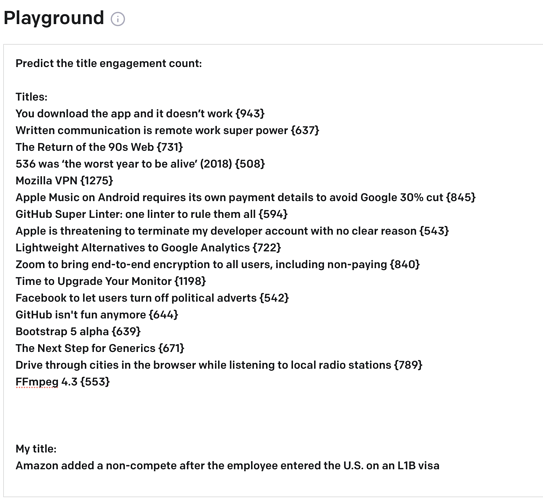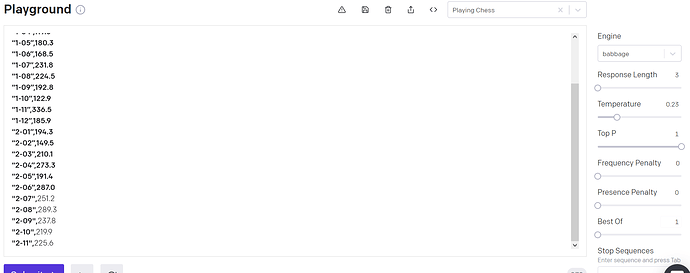Okay, I did some tests, results are not really good. Here is the data set:
https://raw.githubusercontent.com/jbrownlee/Datasets/master/shampoo.csv
It is some sample shampoo sales for 2001-2003 years. I’ve tried the predictor, but it does not go well (the shampoo sales were growing, A.I., from the looks of it, repeats the sequence of previous years.
This is the prompt:
Continue the table by predicting the sales of the product per month:
“Month”,“Sales”
“1-01”,266.0
“1-02”,145.9
“1-03”,183.1
“1-04”,119.3
“1-05”,180.3
“1-06”,168.5
“1-07”,231.8
“1-08”,224.5
“1-09”,192.8
“1-10”,122.9
“1-11”,336.5
“1-12”,185.9
“2-01”,194.3
“2-02”,149.5
“2-03”,210.1
“2-04”,273.3
“2-05”,191.4
“2-06”,287.0
“2-07”,226.0
“2-08”,303.6
“2-09”,289.9
“2-10”,421.6
“2-11”,264.5
“2-12”,342.3
Maybe I phrased it bad.
It works a bit better if I predict per month:
Continue the table by predicting the sales of the product per month:
The table with sales per month:
“Month”,“Sales”
“1-01”,266.0
“1-02”,145.9
“1-03”,183.1
“1-04”,119.3
“1-05”,180.3
“1-06”,168.5
“1-07”,231.8
“1-08”,224.5
“1-09”,192.8
“1-10”,122.9
“1-11”,336.5
“1-12”,185.9
“2-01”,194.3
“2-02”,149.5
“2-03”,210.1
“2-04”,273.3
“2-05”,191.4
“2-06”,287.0
“2-07”,226.0
“2-08”,303.6
“2-09”,289.9
“2-10”,421.6
“2-11”,264.5
“2-12”,342.3
“3-01”,337.9
“3-02”,346.6
My prediction is:
“3-03”,
Any comment would be highly appreciated.


